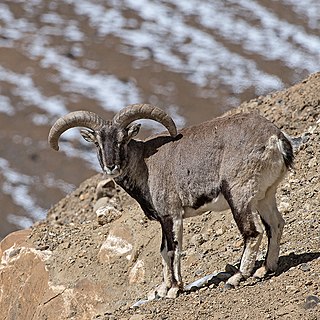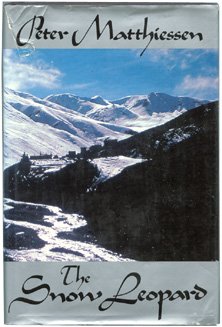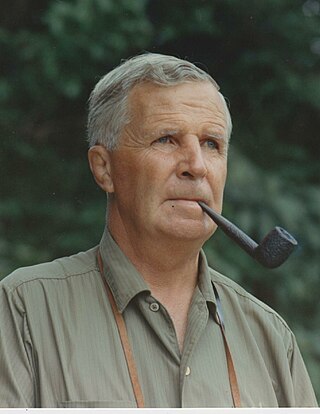Mountain gorilla research
In 1959, when Schaller was only 26, he traveled to Central Africa to study and live with the mountain gorillas (Gorilla beringei beringei) of the Virunga Volcanoes. [5] [13] [14] Little was known about the life of gorillas in the wild until the publication of The Mountain Gorilla: Ecology and Behavior in 1963, that first conveyed to the general public just how profoundly intelligent and gentle gorillas really are, contrary to then-common beliefs. Schaller also, in 1964, recounted this epic two-year study in The Year of the Gorilla, which also provides a broader historical perspective on the efforts to save one of humankind's nearest relatives from the brink of extinction. [13]
The American zoologist Dian Fossey, with assistance from the National Geographic Society and Louis Leakey, followed Schaller's ground-breaking field research on mountain gorillas in the Virungas. [3] Schaller and Fossey were instrumental in dispelling the public perception of gorillas as brutes, by demonstrably establishing the deep compassion and social intelligence evident among gorillas, and how very closely their behavior parallels that of humans. [10]
No one who looks into a gorilla's eyes – intelligent, gentle, vulnerable – can remain unchanged, for the gap between ape and human vanishes; we know that the gorilla still lives within us. Do gorillas also recognize this ancient connection? [15]
Conservation career
In 1963-4, Schaller and his wife were in Kanha National Park, India where they studied tigers. In 1966, Schaller and his wife traveled to Tanzania to live in the Serengeti, and Schaller conducted one of the first studies of social behavior and movement of Africa's big cats. [7] [13] Schaller appeared as himself on the December 6, 1965 episode of the CBS gameshow To Tell the Truth . [16]
In his 1972 work The Tree Where Man Was Born, author Peter Matthiessen described Schaller as "single-minded, not easy to know". Matthiessen went on to say Schaller was "a stern pragmatist" who "takes a hard-eyed look at almost everything", "lean and intent", and in 1978's The Snow Leopard Matthiessen wrote that by that time, some considered Schaller the world's finest field biologist. [1] [6] [17]
In the fall of 1973, Schaller went to the remote Himalayan region of Dolpo, an area of Nepal occupied by people of the Tibetan culture and ethnicity. [10] Schaller was there to study the Himalayan Bharal, (blue sheep), and possibly glimpse the elusive snow leopard, an animal rarely spotted in the wild. Schaller is one of only two Westerners known to have seen a snow leopard in Nepal between 1950 and 1978. Accompanying him on the trip was Matthiessen, and as a result of the trip, Matthiessen wrote The Snow Leopard, (1978) detailing the accounts of their travels and research, which won two U.S. National Book Awards. [18] Schaller is referred to throughout the book as "GS". [17] [19]
In the late 1970s, Schaller spent time in Brazil studying the jaguar, capybara, "alligator" (caiman), and other animals of the region. [11]
In 1980, as part of a cooperative project between the World Wildlife Fund (WWF) and China, Schaller carried out field research on the giant panda in the Wolong Nature Reserve in Sichuan Province. He was the first Westerner to do so since before the founding of the People's Republic of China in 1949, and he co-authored the resulting monograph, The Giant Pandas of Wolong. Schaller sought to refute the notion that the panda population was declining due to natural bamboo die-offs. [10] [11] Instead, Schaller found the panda's popularity was leading to its frequent capture, and was the biggest threat to the population. Schaller also found evidence that pandas were originally carnivores, but underwent an evolutionary change to accommodate a diet of bamboo, which is difficult to digest, reducing competition with other animals for food. [11] Since Schaller's research, the panda population has increased in the wild by 45 percent. [13] During his time in China, Schaller would hand out cards to wildlife hunters that read: "All beings tremble at punishment, to all, life is dear. Comparing others to oneself, one should neither kill nor cause to kill." [13] Schaller has spent more time in China than he has spent at his home in Connecticut. [3] In 1993, Schaller wrote The Last Panda, a meditation not only on the fate of the species but on the politics of conservation more broadly.
In 1988, Schaller and his wife traveled to China's Chang Tang (Qiang Tang) region to study the Tibetan antelope, or chiru, and became one of the first westerners permitted to enter the remote region. [20]
In 1994, Schaller and Dr. Alan Rabinowitz were the first scientists to uncover the rare saola, a forest-dwelling bovine in Laos. Later that year, Schaller rediscovered the Vietnamese warty pig, once thought extinct. In 1996, he located a herd of Tibetan red deer, also thought extinct. [3] [13]
In 2003, Schaller returned to Chang Tang, and found the wildlife in the area had rebounded since his first trip to the region. [21] [22] [23] Most significantly, the wild yak population, which was estimated at only 13 individuals, had grown to over 187. [22] "The Tibet Forestry Department has obviously made a dedicated and successful effort in protecting the wildlife." Schaller wrote in a letter to the World Wildlife Fund's Dawa Cering. [22] While in Tibet, Schaller worked on researching the rare Tibetan antelope, or chiru, whose population declined due to trophy hunting for their exotic wool. [24] Working with Tibetan authorities, and the Liz Claiborne and Art Ortenberg Foundation, Schaller helped protect the breeding and calving grounds of the chiru in the Kunlun mountains of Xinjiang Province. [24]
In 2007, Schaller worked with Pakistan, Afghanistan, Tajikistan, and China to develop a new "Peace Park", that would protect 20,000 miles (32,000 km) of habitat for the largest wild sheep species, the Marco Polo sheep. [3] [8] [13] In danger due to their impressive spiral horns, which can measure up to 6 feet (1.8 m) in length, the sheep is sought out as a trophy by international hunters. [3] Schaller's research in the Pamir Mountains will play an important role in the park's creation. [3] [5] [8]
















